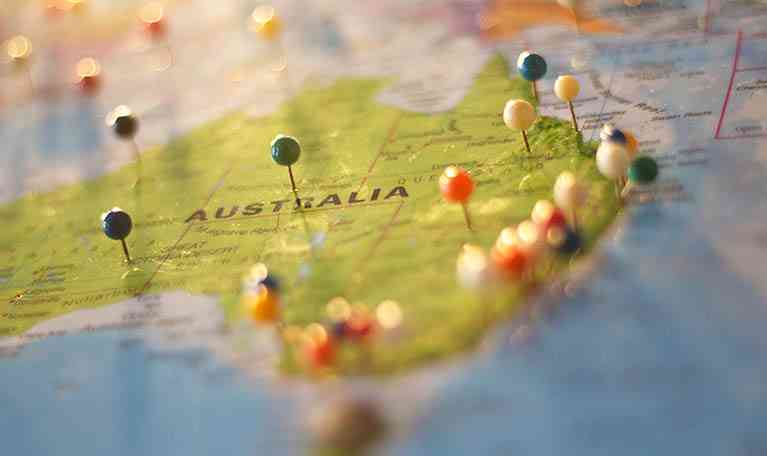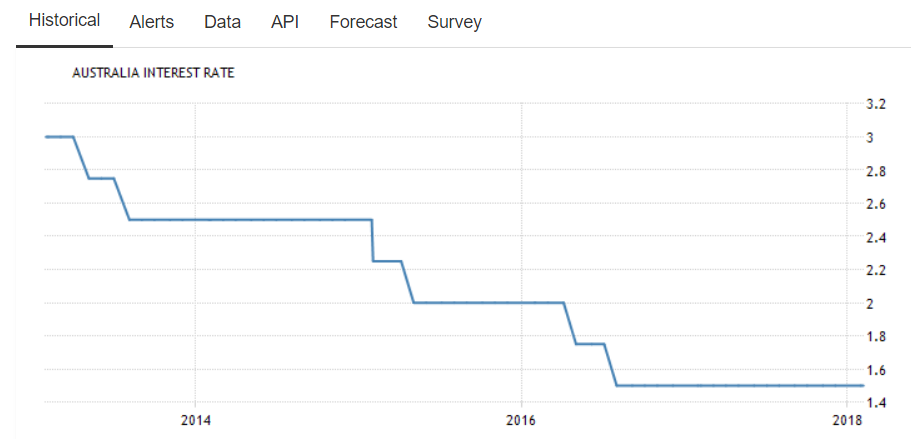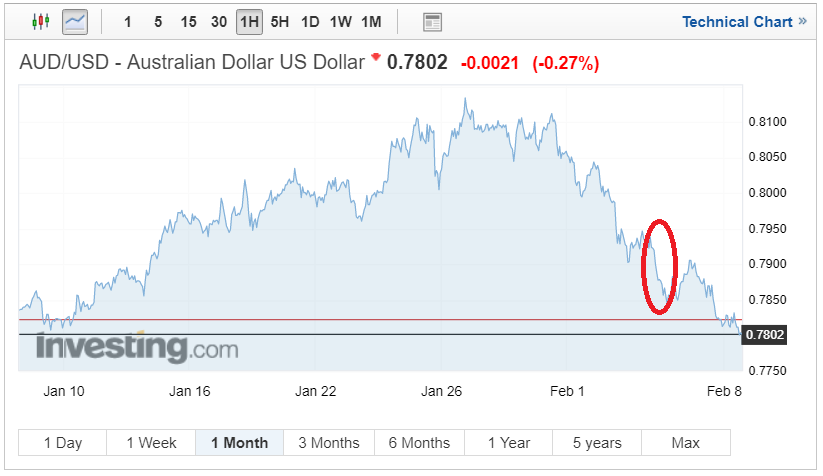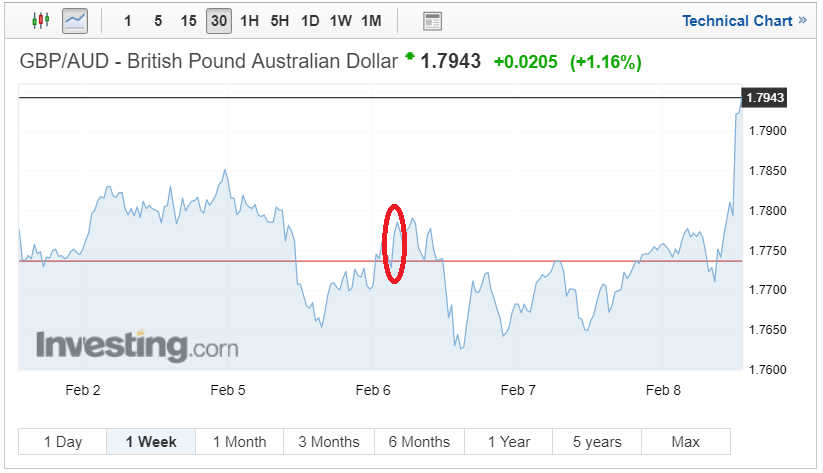Whilst markets and investors hadn’t anticipated an Australian interest rise this month many had felt that Australia’s economic outlook had been looking healthier and therefore anticipated a slightly more up beat rhetoric from the Governor of the reserve bank of Australia, Philip Lowe. Instead, his speech became one of the mixed signals which saw the Australian Dollar slip.

Current Australian interest rate levels
The Australian interest rate sits currently sits at 1.50% a low for Australia. The Australian cash rate was last tweaked in August 2016 and was lowered from 1.75%. Therefore savers are willing interest rates to rise, especially as in January a key economic concern on consumer spending was allayed slightly when previous retail sales figures smashed their forecast of 0.4% and sent the Australian dollar soaring against USD.
Whilst some investors have criticised the RBA’s policy due to Australian interest rates remaining at the historic low since August 2016. Dr Lowe defended the rationale stating during his conference
“The low level of interest rates is continuing to support the Australian economy,”
February’s Australian retails sales
The triumph in last month’s figures regrettably wasn’t reflected in this month’s Australian retail sales figures. Februarys retail figures were forecast to reach – 0.2% following Januarys bumper haul of 1.2%, an above-forecast number would have provided consistent evidence that consumer spending had turned a corner, unfortunately, this month’s retail figures showed a significant drop reaching just -0.5%.
What hurdles does the Australian economy continue to face?
- Wage growth – Dr Lowe conceded that Australian wage growth remains low and will remain low for the foreseeable. Dr Lowe does, however, believe that the strengthening Australian economy will eventually equate to higher wages.
- Australian Inflation – Inflation remains low and is expected to continue in this manner. Dr Lowe believes low inflation is supporting the economy. The fourth quarter inflation report highlighted that inflation was lower than the ideal 2%. The low inflation is due modest wage growth and competition in the retail sector.
- Recent stock market drops – it hasn’t just been the Dow Jones and Nasdaq that have suffered this week. In total, the ASX shed $66 billion signifying the largest one day fall in two years. The RBA will almost certainly want to see if this is a correction or just the start of something more substantial.
- The strength of the Australian Dollar – since early December the Australian dollar has strengthened by over 3.5% against the US dollar. In December the reserve bank of Australia stated that the continually strengthening Australian dollar could jeopardise the recovery. A strong dollar combined with rising prices on raw goods could potentially begin to be felt through exports.
Philip Lowe Governor of the RBA’s take on the Australian economy
Despite the mixed data Dr Lowe remained relatively upbeat about the overall economy saying that economic data that had been released was consistent with the Reserve bank of Australia’s forecast. Growth is forecast to reach over average of 3.0% over the next few years.
Lowe also sort confidence from Australian business conditions which remain upbeat as well as growing interest in non-mining sectors.
Australian employment grew strongly last year. Whilst unemployment remains low at its lowest level in 4 years at 5.4%, further reductions are also anticipated. Whilst the RBA also believes employment is on the rise as is the growth on the labour force in all states.
Australian dollar slips further against US dollar
The last few weeks have seen the Australian dollar slip significantly, the US dollar and the hurdles that the Australian economy faces will have to be remedied in order for it consider raising rates. The depreciation in the Australian dollar will be welcomed by the RBA and potentially, if the trend continues provide a nice shot in the arm for both commodities and exports. Since the 31st of January the Australian dollar has slipped from 0.81 to 0.7855 after the RBA’s announcements.
Whilst the recent depreciation in the AUD can also be tied to recent iron ore and oil pricing.
Pound to Australian dollar exchange rates
The Pound has been unable to gain further traction against the Australian dollar with political wranglings, Brexit negotiations looming and disappointing services PMI’s. The RBA announcement saw GBP/AUD trade sideways moving from 1.7729 to 1.7786. Although as eluded to above, none of the gains were held for long.


